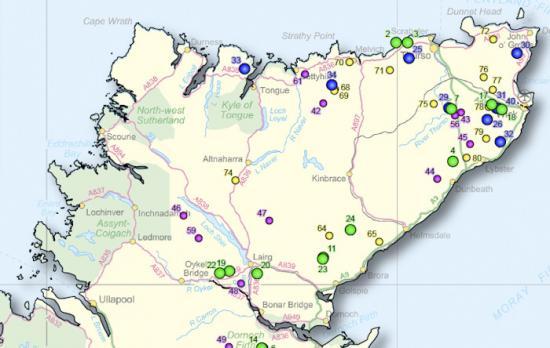Hydro Station Approved
15th December 2013

Homes to benefit from hydro pump storage flexibility.
Energy Minister, Fergus Ewing has today granted planning consent for a hydroelectric pumped storage generating station at Coire Glas, near Spean Bridge.
The pump storage station, which will be developed by Scottish and Southern Energy will consist of a dam and reservoir at Loch a �Choire Ghlais, an underground cavern power station and underground tunnel system and an outlet area on the shore of Loch Lochy.
The new station development would have a generating capacity of up to 600MW, with an energy storage capacity of up to 30GWh.
Mr Ewing said:�The construction programme for the Coire Glas development is expected to last five to six years and during this time it is estimated 150 jobs will be created.
�This development will bring many benefits to local trades being involved at various stages throughout the project. There will also be some indirect jobs resulting from the supply of goods, materials and services for construction.
�With a huge 600MW generating capacity, this scheme will be by far the most powerful of its kind in Scotland. Whilst generating it will have the potential to provide up to 10% of Scotland�s estimated peak electricity demand.
�Energy storage has a key role to play as part of a balanced electricity mix in supporting security of supply requirements. Pumped storage stations can provide a valuable responsive supply to maintain the stability of the grid and help integrate renewable generating technologies.
�With warnings that Great Britain capacity margins will be tight over the coming decade, this station can provide a valuable contribution to security of supply. It is unique in the UK in comparison to other existing pumped storage schemes in its ability to release energy to the electricity grid for extended periods, offering an estimated 50 hours of continuous operation.
�A development like this offers a fantastic boost to the ambitions of the Scottish Government to increase the proportion of electricity generated using renewable resources because it helps deal with the variability of renewables. When the wind blows, excess energy can be used to pump water up into the vast store, and when the wind yield is low the station can be brought on line to provide the electricity needed.
�This is precisely the kind of development and capacity which the UK Government�s electricity market reforms must be designed to provide sufficient support.�
The Present Alternative energy Position In Scotland
The Scottish Government has determined 88 energy applications, including consent for 59 renewable applications: 33 onshore wind, 1 offshore wind, 19 hydro, 4 wave and tidal and 2 Renewable Thermal Plant; and 19 non-renewable projects since May 2007. The Scottish Government has previously rejected 10 energy applications since May 2007, all of which were onshore wind farms.
The Scottish Government�s Energy Consents and Deployment Unit is currently considering another 58 applications of >50MW capacity generating stations, including 52 onshore wind applications, 1 renewable hydro application, 2 renewable thermal applications. In addition to this there are 13 active applications for overhead lines.
Highland Renewable Energy Strategy
http://www.highland.gov.uk/yourenvironment/planning/energyplanning/renewbleenergy/highlandrenewableenergystrategy.htm
Wind Farm Footprint Maps
http://www.snh.gov.uk/planning-and-development/renewable-energy/research-data-and-trends/trendsandstats/windfarm-footprint-maps/
Pentland Firth and Orkney Waters
http://www.scotland.gov.uk/Topics/marine/marineenergy/wave/rlg/pentlandorkney
Renewable Energy Microgeneration - Highland
http://www.highland.gov.uk/businessinformation/energyandsustainability/renewableenergy/
Highland Wind Farms as At December 2012
http://www.highland.gov.uk/NR/rdonlyres/7D7C8DC6-3791-49D3-B0A4-448EA69221F9/0/highland_wind.pdf
